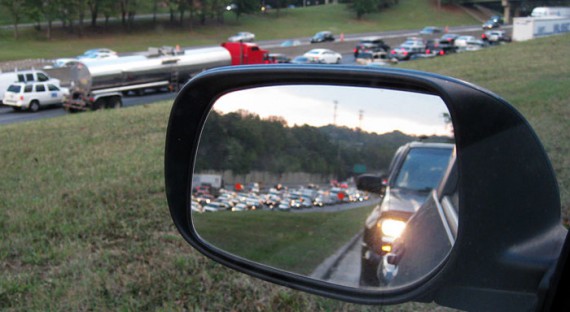As of yesterday, I’ve successfully written something every day in 2015. Sometimes it’s been a little, sometimes it’s been a lot, but it’s always been something. I’m pleased to be able to say that.
Unfortunately, all this sitting at my desk writing has resulted in a side effect: back pain. Something about the way I sit causes a soreness in my middle back on the right side. It almost feels like getting a stitch in my side, but on my back instead of my front. I’ve had this pain before. It makes it hurt to bend over or twist or carry things. When the pain suddenly flared up when I came home for lunch on Wednesday, I made two changes in response: I switched desk chairs at home, and I changed my desk at work to standing mode.
I worked the rest of Wednesday and then all of yesterday standing up, a day and a half, and it has in fact helped my back. It also made me feel very energetic for most of the workday yesterday. I told my coworkers that I felt “powerful”. I even did 20 standing pushups against the part of the desk that wasn’t raised, because why not?
I came home at lunch and wrote a tiny story, which is good, because I hadn’t written anything that morning. And then, when I got home last night, I was completely exhausted. I don’t know if standing up all day sapped me mentally, or if this week’s work, which has involved a lot of editing and providing feedback, has been more of a drain than usual. In any case, my brain didn’t seem to want to do anything. I couldn’t figure out what to do for dinner, let alone write. Worse, I kept feeling discouraging thoughts creeping in–that everything I have written and everything I’m trying to write is terrible, and that there’s no point to any of it. At about 6:30 I gave up on everything and went to bed, still wearing all my clothes.
Sean came in eventually and asked if I wanted to go to Sushi Huku, which I would normally love to do, but “I don’t feel like going anywhere,” I mumbled. He kissed me and left me alone, and I slept until midnight.
When I awoke, I got up, took a shower, and got into a t-shirt and yoga pants, my typical pajamas. Sean was asleep. I opened the fridge and discovered that he’d ordered pizza, which was a relief; I’d worried he hadn’t eaten anything. Then I teared up at the thought of having to feed both of us every day. It occurred to me that I probably hadn’t had enough rest yet. But I was still pretty awake, and I knew I probably needed protein too, so I made myself some hot dogs and got online to read for a couple hours. I didn’t try to write anything. I did try not to feel bad about that.
Around 3:30, I climbed back into bed and put on an episode of Welcome to Night Vale. Eventually I fell asleep, I guess around 4, meaning I got two more hours of sleep before my alarm went off at 6.
I think, I hope, that I am rested enough to get through today. At least I am able to recognize that the bad feelings I was having were due to being completely drained, and that I don’t have to feel that way.
It seems that after each sleep, I have a certain amount of energy. I’m not sure if I get the same amount each time. But I can certainly run out of it too soon if I’m not careful, and running out tends to plunge me into depression. I’m glad I recognize this and know what to do (go to bed, basically) when it happens.
